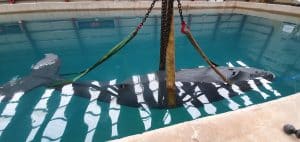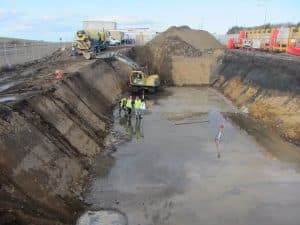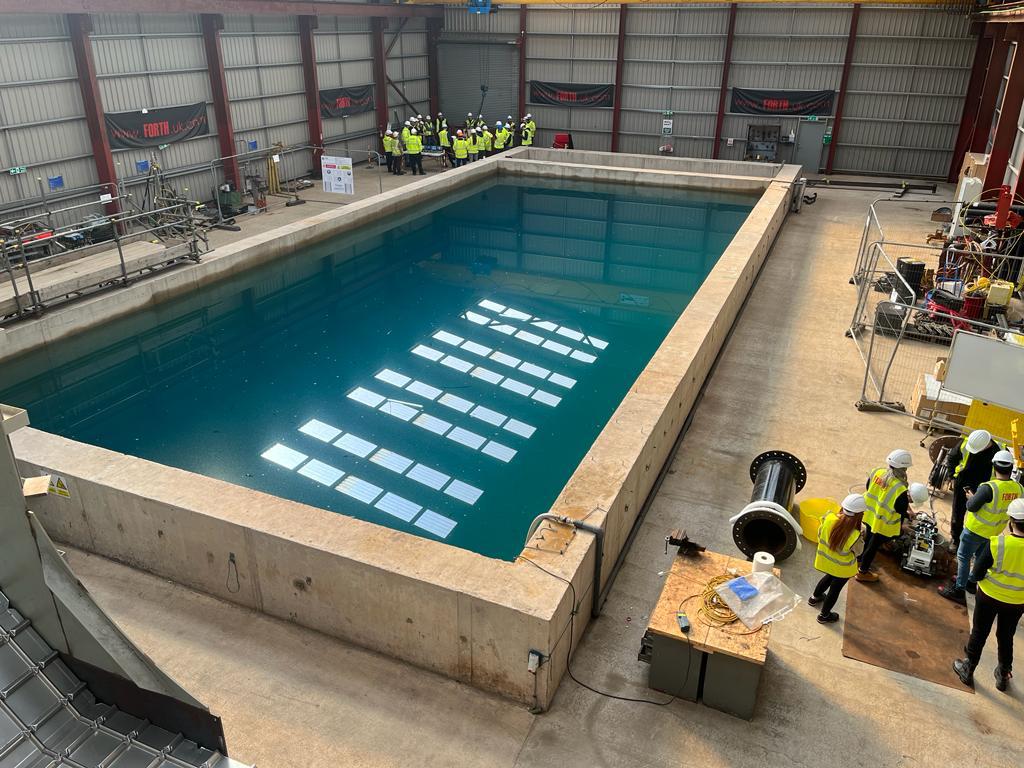ONE of the leading deep water test facilities in the UK is marking a decade of being at the beating heart of innovation.
The project to construct a 1.2 million litre Deep Recovery Facility at the Cumbria HQ of Forth Engineering was fraught with technical and financial challenges.
But a refusal to accept failure led to its eventual completion – and subsequent use for everything from the testing of a three-metre remote control whale, to complex underwater robots.

Now, as Forth marks 10 years of the DRF, the two colleagues who drove the project to completion have reflected on its success.
Managing Director, Mark Telford, said: “It was a Field of Dreams Moment: “If you build it, they will come.”
“We convinced ourselves it was the right thing to do. We already had two much smaller, three
metre-cubed test ponds that were in full use, so there was demand.
“We knew that if we could pull this off, it had the potential to be huge, and to become one of the leading facilities of its kind in the country.”
The decision to build a pond ‘as big as we can’ led to the Forth team submitting a planning application for the project – but with the proposed site nestled between a major road and West Cumbria’s coastal railway line, it was destined to be a complex and resource-draining venture.
As thousands of tonnes of soil and sand were shifted to create a hole for the six-metre deep pond – which was to be 22.5 metres long and 10 metres wide – both the Highways Agency and Network Rail made unsuccessful attempts to halt the process.
Work continued but by 2012, the project had run out of money. By this point, the expansive hole contained the concrete base and walls of the pond but had not been backfilled.

“It had become a white elephant,” said Forth Projects Director Graham Cartwright. “We had run out of money, the site hadn’t been touched for a couple of years and in all honesty, we were wishing we hadn’t started.
“Then in the late summer 2014, we were approached by a business with an urgent need for a test facility. They asked us how far off completion we were.”
The company – Westinghouse – needed to be in a fully operational and covered facility within six weeks.
By this point, with some grant funding, the area around the pond had been back filled. A race against time started to build a 12,000 sq ft building to shield it from the elements so it could facilitate its first major contract.
With round-the clock shift patterns in place, the main structure and roof, along with a crucial internal crane, were completed in just six weeks, allowing the facility to be used whilst guarded by security officers.
The external cladding was completed within 12 weeks of the Westinghouse call and the building was officially opened as the UK’s newest deep water test facility. By the beginning of 2015, it was being used as a live test facility by a variety of clients – and a decade on has become on of the key facilities of its type in the UK.
Graham said: “As with all projects Forth undertakes, failure was not an option. We had a hard deadline and as a team we worked tirelessly through the days, nights, and weekends to make sure the project hit its deadlines.”
Since then, it has been regularly used by a host of companies, with everything from a robotic whale used in the BBC series A Spy in the Ocean, to a variety of in-house innovations being tested in the pond.
The facility has also been used by the likes of Sellafield, Magnox, Shell, the Low Level Waste Repository and global industry giants EM&I to test robots, processes and equipment in a safe and secure environment.


